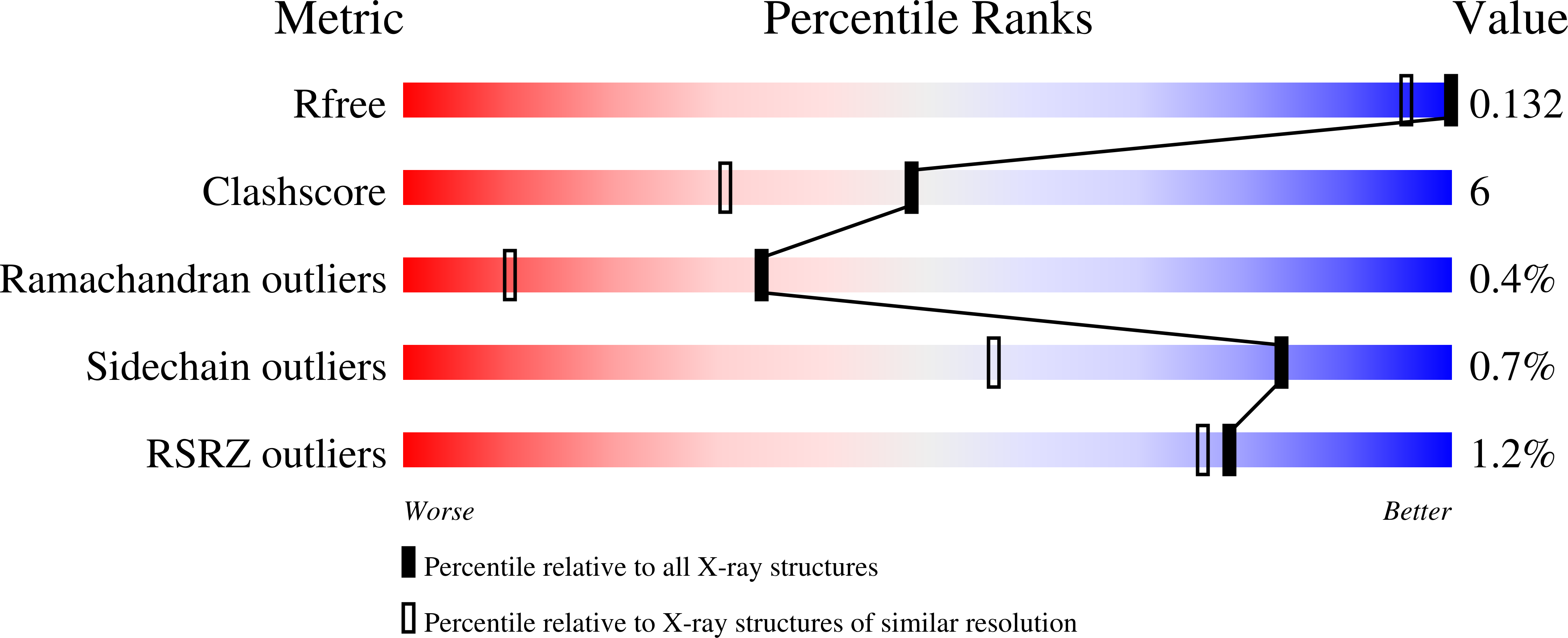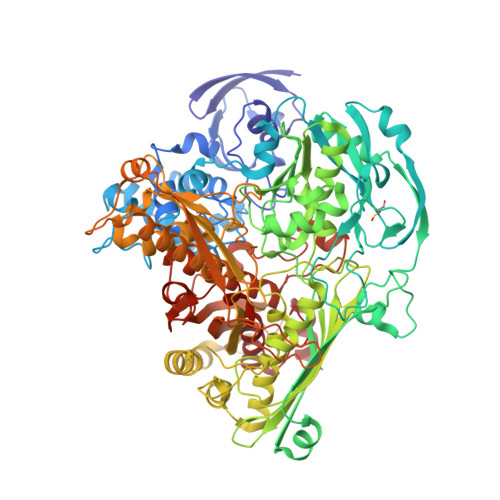Aromatic Aldehydes at the Active Site of Aldehyde Oxidoreductase from Desulfovibrio Gigas: Reactivity and Molecular Details of the Enzyme-Substrate and Enzyme-Product Interaction.
Correia, H.D., Marangon, J., Brondino, C.D., Moura, J.J.G., Romao, M.J., Gonzalez, P.J., Santos-Silva, T.(2015) J Biol Inorg Chem 20: 219
- PubMed: 25261288
- DOI: https://doi.org/10.1007/s00775-014-1196-4
- Primary Citation of Related Structures:
4US8, 4US9, 4USA - PubMed Abstract:
Desulfovibrio gigas aldehyde oxidoreductase (DgAOR) is a mononuclear molybdenum-containing enzyme from the xanthine oxidase (XO) family, a group of enzymes capable of catalyzing the oxidative hydroxylation of aldehydes and heterocyclic compounds. The kinetic studies reported in this work showed that DgAOR catalyzes the oxidative hydroxylation of aromatic aldehydes, but not heterocyclic compounds. NMR spectroscopy studies using (13)C-labeled benzaldehyde confirmed that DgAOR catalyzes the conversion of aldehydes to the respective carboxylic acids. Steady-state kinetics in solution showed that high concentrations of the aromatic aldehydes produce substrate inhibition and in the case of 3-phenyl propionaldehyde a suicide substrate behavior. Hydroxyl-substituted aromatic aldehydes present none of these behaviors but the kinetic parameters are largely affected by the position of the OH group. High-resolution crystallographic structures obtained from single crystals of active-DgAOR soaked with benzaldehyde showed that the side chains of Phe425 and Tyr535 are important for the stabilization of the substrate in the active site. On the other hand, the X-ray data of DgAOR soaked with trans-cinnamaldehyde showed a cinnamic acid molecule in the substrate channel. The X-ray data of DgAOR soaked with 3-phenyl propionaldehyde showed clearly how high substrate concentrations inactivate the enzyme by binding covalently at the surface of the enzyme and blocking the substrate channel. The different reactivity of DgAOR versus aldehyde oxidase and XO towards aromatic aldehydes and N-heterocyclic compounds is explained on the basis of the present kinetic and structural data.
Organizational Affiliation:
UCIBIO@REQUIMTE, Faculdade de Ci¨ºncias e Tecnologia, Universidade Nova de Lisboa, 2829-516, Caparica, Portugal.
























